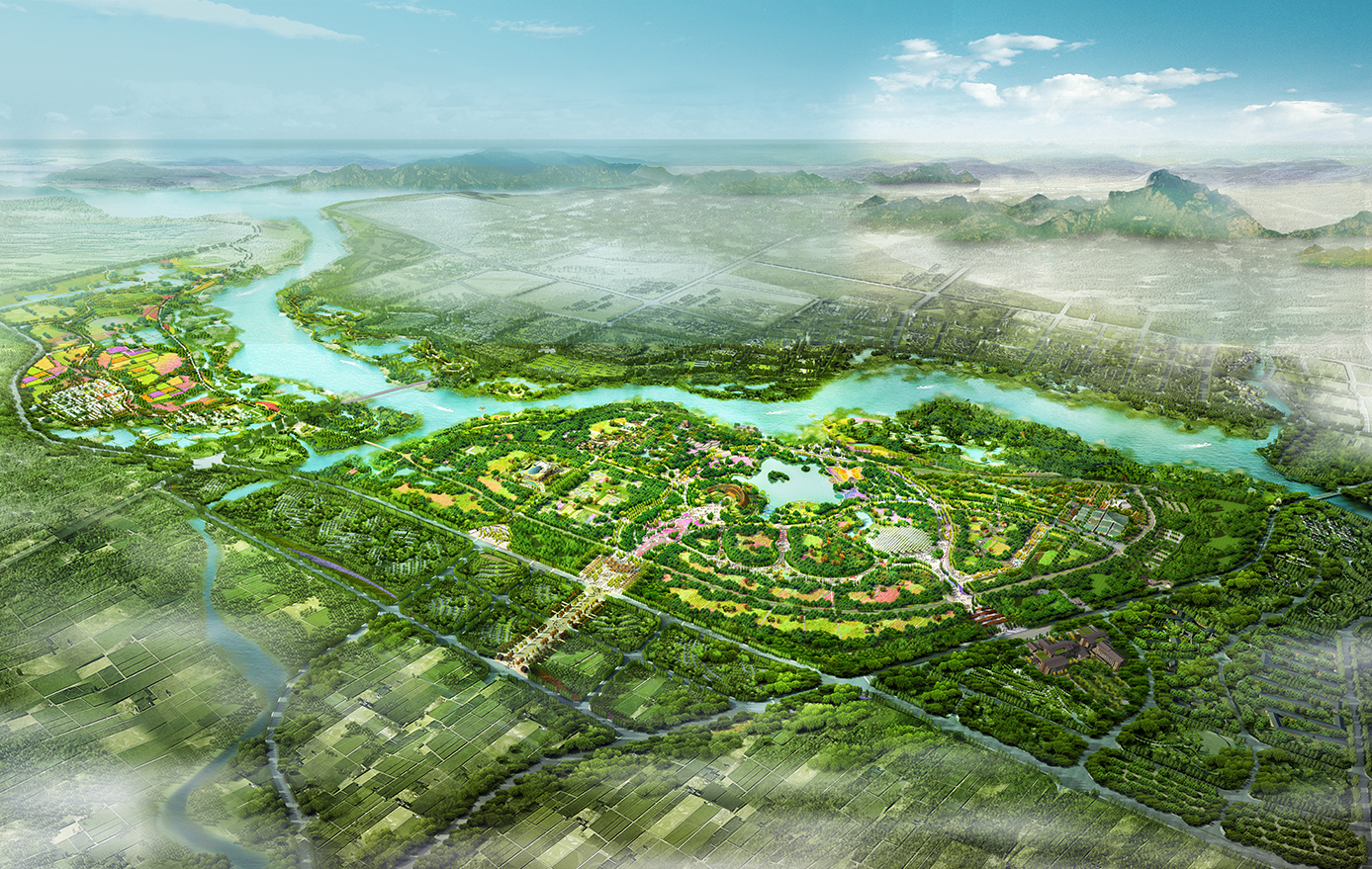On April 16, 2019, in the Holy See Press Office, a press conference was held to present the Holy See Pavilion of the International Horticulture Exhibition, to be held in Beijing from April 28 to October 7, 2019, on the theme Live Green. Live better.
The speakers were Cardinal Gianfranco Ravasi, president of the Pontifical Council for Culture, commissioner of the Holy See Pavilion, and Rev. Tomasz Trafny, deputy commissioner of the Pavilion.
The following is a press release on the background, theme, and assembly of the Pavilion:
Press Release
The Government of the People’s Republic of China has invited the Holy See to participate with its own pavilion at the International Horticulture Exhibition, to be held in Beijing from April to October 2019.
The Holy See has accepted the invitation and has entrusted the organization to the Pontifical Council for Culture. On 18 October 2017, Cardinal Gianfranco Ravasi, president of the Pontifical Council for Culture, was appointed as general commissioner of the Holy See for the Beijing International Horticultural Exhibition 2019, and Msgr. Tomasz Trafny, official of the same Pontifical Council, was appointed as deputy general commissioner. The fruitful dialogue that subsequently developed with the Beijing Expo Coordination Bureau has facilitated the participation of the Holy See.
The theme
The main theme of the Expo is Live green. Live better, divided in turn into five sub-themes. The Holy See Pavilion developed its own space around the sub-theme Home of Hearts, with the aim of promoting the messages expressed by the Holy Father in the Encyclical Letter Laudato si’.
Cardinal Gianfranco Ravasi and H.E. Msgr. Paul Tighe, secretary of the Pontifical Council, will inaugurate the Holy See Pavilion this coming Monday 29 April. In addition, on 14 September 2019, the day will be dedicated to the Holy See (the Holy See National Day). A symposium is being organized for the occasion, dedicated to the theme of ecology.
The Pavilion
Inside the Pavilion, which will occupy an area of around 200 m2, documents from the Vatican Apostolic Library regarding herbaria and the medicinal properties of herbs and plants will be displayed:
1) an illustrated herbarium without text (Codex Chigi – F. VII 158), manuscript of 112 sheets (224 pages), measuring approximately 302 x 22 mm, a codex not conceived as a luxury book but rather as a working tool in the fields of medicine and pharmacology;
2) a Greek-Latin Dioscorides (Codex Chigi 53 – F.VII 159), part of a small collection of manuscripts containing the drawings of Dioscorides’ Materia Medica (I century A.D.), according to the main specimens of the Greek tradition, composed of 242 parchment sheets and an index of 10 sheets on paper. Both are conserved in the “Fabio Chigi” Collection of the Vatican Apostolic Library (Pope Alexander VII, 1655-1667).
In addition, a reproduction will be included of the painting by Peter Wenzel (Karlsbad 1745 – Rome 1829), Adam and Eve in the Earthly Paradise, conserved in the Vatican Museums. The large canvas represents the climax of the career of the painter, famous for his ability to reproduce the most diverse species of animals with extraordinary naturalism. The artist gathers around the figures of Adam and Eve those of another two hundred animals from all over the world, reproduced with detailed knowledge and scientific precision and inserted into an admirable natural landscape. Indeed, in 1831 Gregory XVI (pontiff from 1831 to 1846) purchased twenty works by the Austrian painter to furnish the representative Consistory Hall of the papal apartment.
The Pavilion will also house an innovative indoor hothouse, realized with cutting-edge technologies, which will represent the universal message “Let there be light”.
Two works hitherto unseen by the public will also be exhibited: a bronze relief of Saint Peter’s Square, with the Rose of the Winds of the East and a gilded sculpture of an olive tree.
All the content on display in the Pavilion will be accessible to visitors through non-polluting Li-Fi technology.
Collaborations and acknowledgments
For the layout of the Pavilion, important contributions have been offered by the Vatican Apostolic Library, by H.E. Msgr. José Tolentino Calaça de Mendonça, by the Vatican Museums, with the support of Dr. Barbara Jatta, and by the Dicastery for Communication, in the person of the prefect, Dr. Paolo Ruffini, and the assessor, Msgr. Dario Edoardo Viganò for films on the Vatican Gardens and the Pontifical Villas. Special thanks are given also for the valuable collaboration offered by the diplomatic Representations of Italy in Beijing and of the Netherlands at the Holy See, at the FAO, and in Beijing. This latter has undertaken to provide the floral support for the entire six months of the exhibition.
Finally, the Fundação Ilidio Pinho, the architect Guido Rainaldi, Dr. Ferdinando Latour and the Focolare Movement collaborated in the realization of the Pavilion.

Expo 2019 Website
Presentation of Holy See Pavilion at Beijing International Horticultural Exhibition
‘Live Green. Live better.’


